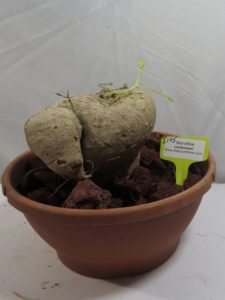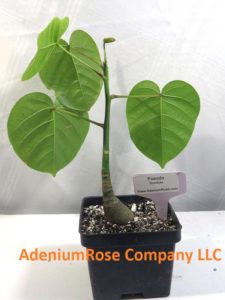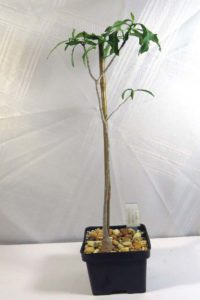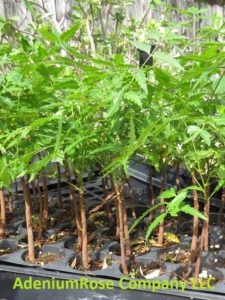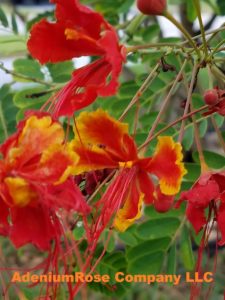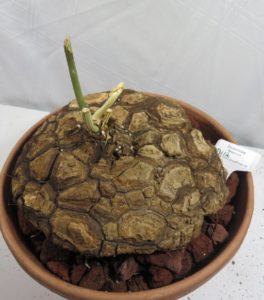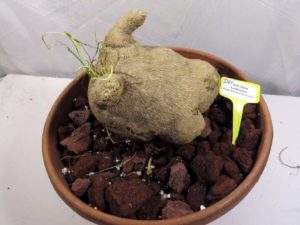 Plant dormancy occurs with most succulents, cactus, tropical and other plants during winter months. In addition, periods of drought and high temperatures will cause plant dormancy in many desert plants. The image on the left shows a plant ibervillea lindeimeri coming out of dormancy. Notice the new vines emerging for the top of the plant.
Plant dormancy occurs with most succulents, cactus, tropical and other plants during winter months. In addition, periods of drought and high temperatures will cause plant dormancy in many desert plants. The image on the left shows a plant ibervillea lindeimeri coming out of dormancy. Notice the new vines emerging for the top of the plant.
Plant dormancy is a period in an organism’s life cycle when growth and development activity are temporarily stopped. The plant greatly reduces growth and defoliates – its metabolic activity slows down to conserve energy. Dormancy usually is closely related with environmental conditions such as shorter daylight, cooler weather, extreme heat and low water.
Watering During Plant Dormancy
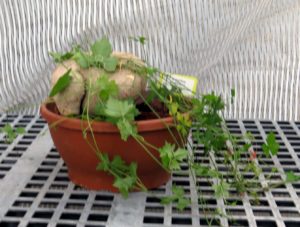 If you obtained a Cacti, succulent, or other plant during dormancy period please make sure you know what to do. During dormancy plants drop their leaves (most of the time 100%) so your plant may arrive leafless. During plant dormancy you need to reduce watering to prevent root problems and other issues. The majority of plants, not all, that go dormant still need to be watered once a month. Ibervillea lindeimeri in full growing mode – image to left.
If you obtained a Cacti, succulent, or other plant during dormancy period please make sure you know what to do. During dormancy plants drop their leaves (most of the time 100%) so your plant may arrive leafless. During plant dormancy you need to reduce watering to prevent root problems and other issues. The majority of plants, not all, that go dormant still need to be watered once a month. Ibervillea lindeimeri in full growing mode – image to left.
Pruning Cropping Transplanting during Plant Dormancy
Dormancy is a great time to transplant plants into larger containers or refresh the soil. During plant dormancy many types of plants that grow vines or canes are pruned. Remember this is not the time to prune/crop some types of plants.
Here is a partial list of plants from AdeniumRose Company that go dormant:
- Adeniums – DO NOT crop / trim branches during dormancy. Depot during plant dormancy carefully. If you repot dip root hormone then wait 4 weeks to water. Crop branches after the plant flowers in spring. Remember do not cut below graft lines or you will lose your hybrid flower types! If a hybrid adenium (grafted plants) then always remove branches/limbs BELOW the graft lines to force growth of the grafted limbs. 93% of all hybrid adenium plants are grafted.
- Baobab Adansonia – Re-pot but DO NOT trim branches. New growth starts at the end of the branches.
- Christia Vespertilonis – Re-pot but DO Not trim branches.
- Dioscorea Elephantipes Mexicana – trim vines back and repot during dormancy. Water once every 2 months or not at all depending upon your growing environment.
- Flamboyant Plants – Trim branches and repot during this time.
- Ibervillea Lindheimeri – trim vines back and report during dormancy. leave 1′-2″ of the vine on the plant. Water once every 2 months or not at all depending upon your environment.
- Jatrophia Berlindieri – trim vines back and report during dormancy. Water once every 2 months or not at all depending upon your environment.
- Plumeria plants – Re-pot at this time. Do not trim branches now.
- Pseudobombax – trim branches and repot.
Know Your Plants Life Cycle
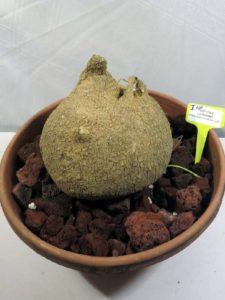 Many plants go dormant in one growing environment while not in others. In Southeast Florida, a tropical environment, the adenium plants slow growth and will lose some leaves but not all. The Christia vespertilonis sometimes drops its leaves. AdeniumRose Company LLC also know as Epic Grower LLC reduces watering to 1-2 times month instead of every week during plant dormancy. This stresses the importance in doing your research on the plants in your garden or containers. Image on left is a ibervillea lindeimeri in full dormancy. Vines cut back to caudex.
Many plants go dormant in one growing environment while not in others. In Southeast Florida, a tropical environment, the adenium plants slow growth and will lose some leaves but not all. The Christia vespertilonis sometimes drops its leaves. AdeniumRose Company LLC also know as Epic Grower LLC reduces watering to 1-2 times month instead of every week during plant dormancy. This stresses the importance in doing your research on the plants in your garden or containers. Image on left is a ibervillea lindeimeri in full dormancy. Vines cut back to caudex.


